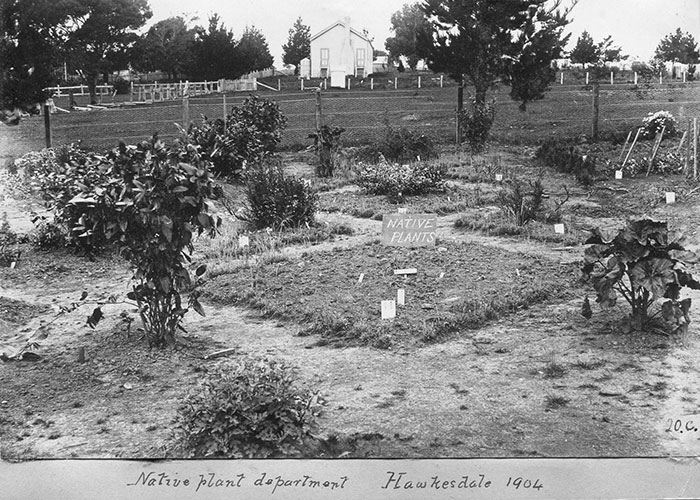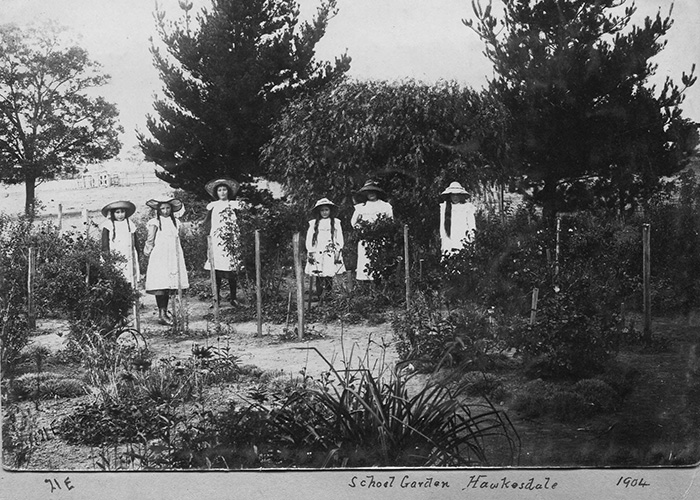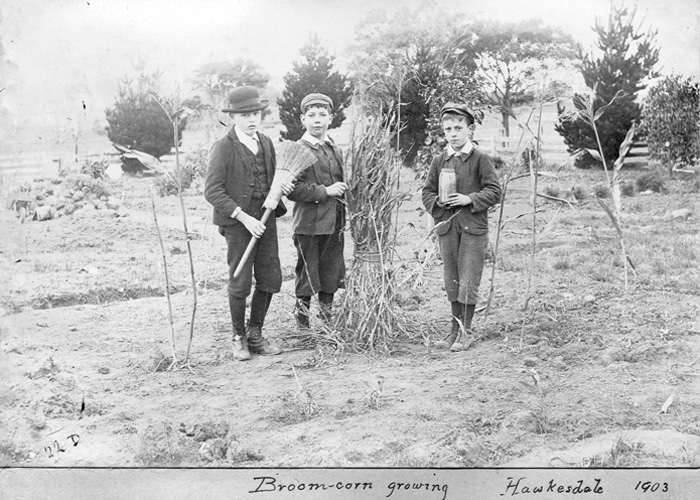Headmaster of Hawkesdale
The small town of Hawkesdale is approximately 270 km west of Melbourne, and 35 km north of Port Fairy1. Williamson was a school teacher and Headmaster at a number of Victorian State Schools spanning 49 years2.
Williamson served as headmaster at Hawkesdale State School from 1892 to 1908. It was here that he established school gardens consisting of plots filled with agricultural crops, native plant species, scent gardens and experimental plots. Additionally, an apiary was established where students were taught beekeeping.


Schools under his charge, as Hawkesdale, Penshurst, etc., became centres in nature study for keen and intelligent juvenile observers, who, under skilful direction, vied with each other to obtain his approbation and warm encouragement2
- Charles Daley, The Victorian Naturalist, 1931

At the Hawkesdale State School, the grounds were transformed into an attractive garden containing 120 species of trees and shrubs, 56 of which were acacias. This garden secured both admiration and praise, and the school was awarded the A.N.A. prize for the best school ground in the Inspectoral District.2
- Charles Daley, The Victorian Naturalist, 1931

‘Broom-corn growing, Hawkesdale, 1903’ Photo by Williamson. Photo courtesy of the Martin family.

Early botanical collections
Williamson’s early botanical specimen collections were stamped with blue ink labelled ‘Mounted by H.B. Williamson Hawkesdale, 1895 – 98’. Williamson’s Collection, including specimens and his papers, were sent to the National Herbarium of Victoria. However, this particular collection comprising approximately 250 specimens was sent to The Victorian School of Forestry in Creswick3 and is part of a larger collection of ca. 1000 Williamson specimens now at The University of Melbourne Herbarium.
Most of these specimens were collected by Williamson, however there are others, including many women, who contributed to this collection3. These specimens continue to provide data for plant science research.
References
1. Monash University & The University of Queensland. Hawkesdale: Victorian Places; 2015 [cited 2020 Dec 10
2. Daley C. H.B. Williamson: An appreciation. The Victorian Naturalist. 1931;47:172-75.
3. Bell T, Blackwell P, Ashton A. Foliage - the Victorian School of Forestry Herbarium. In: Fry BD, Hateley RF, Youl RM, Forest Education Centenary Committee (Vic.), editors. Circumspice: One hundred years of forestry education centred on Creswick, Victoria. South Melbourne, Victoria: Forest Education Centenary Committee; 2010. p. 125–40.